
Ghost Towning
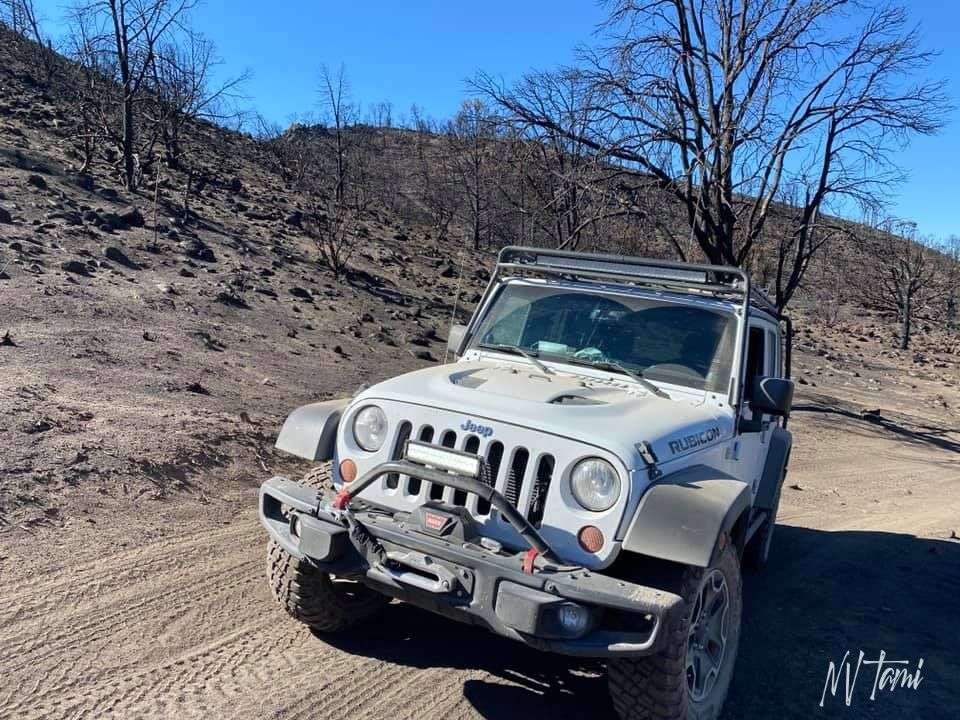
In October 2020, four brave friends decided to accompany me on a three-hour tour. The Professor, Ginger, Marian, and Gilligan. Sorry, wrong show. Hubby, Steve, Shonna, Robin, Aaron, and I set off in two Rubicons and the Little Liberty That Could, at least when driven by an expert off-roader.
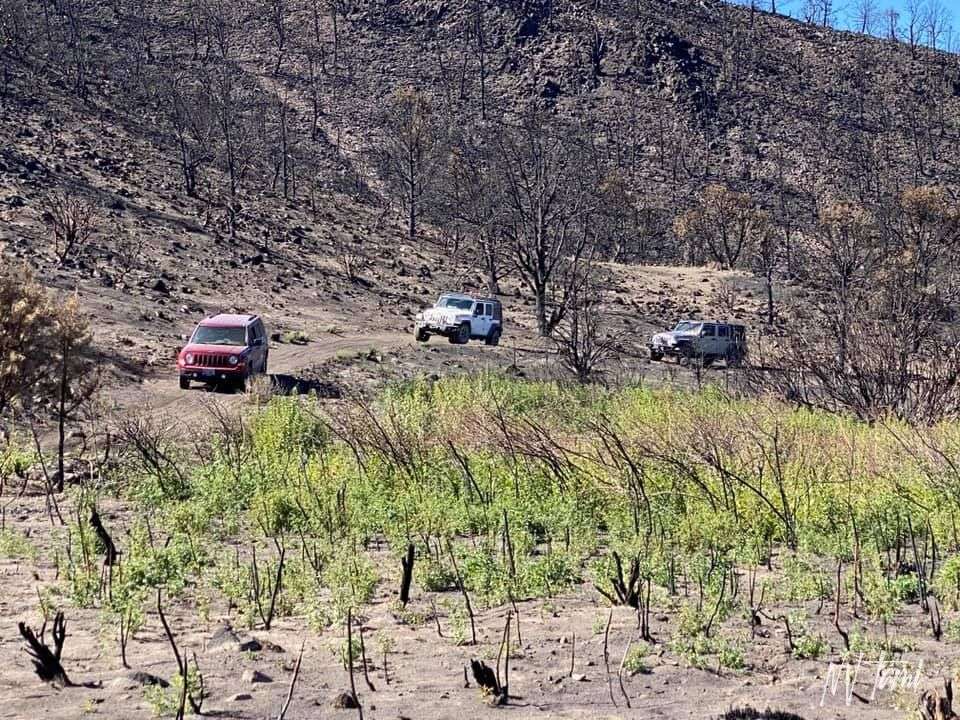
Our goal was Bullionville, a little-known mine and ghost town in Douglas County. We tried four different routes to access Bullionville. First, we tried to go around, then over, then through 7600′ Sugar Loaf. Each time inaccessible roads thwarted our travels. In July, the Numbers Fire, destroyed over 18,000 acres in the Pine Nut Mountains, giving everything an otherworldly look and causing erosion.

Aaron the Great saved the day and took us to nearby early 1900s Preacher’s Mine. I bet you can’t guess the occupation of the owner.
Preacher’s Mine
The glint of riches lures many: miners, investors, businessmen, and even men of the cloth.
Pastor George W. Emighn started a small assay office next to his house. Emigh was well-liked in the community and known as a preacher, painter, and prospector. When fellow prospector Len Ward brought ore to assay, Emigh was impressed with the quality and invested in the mining claim.
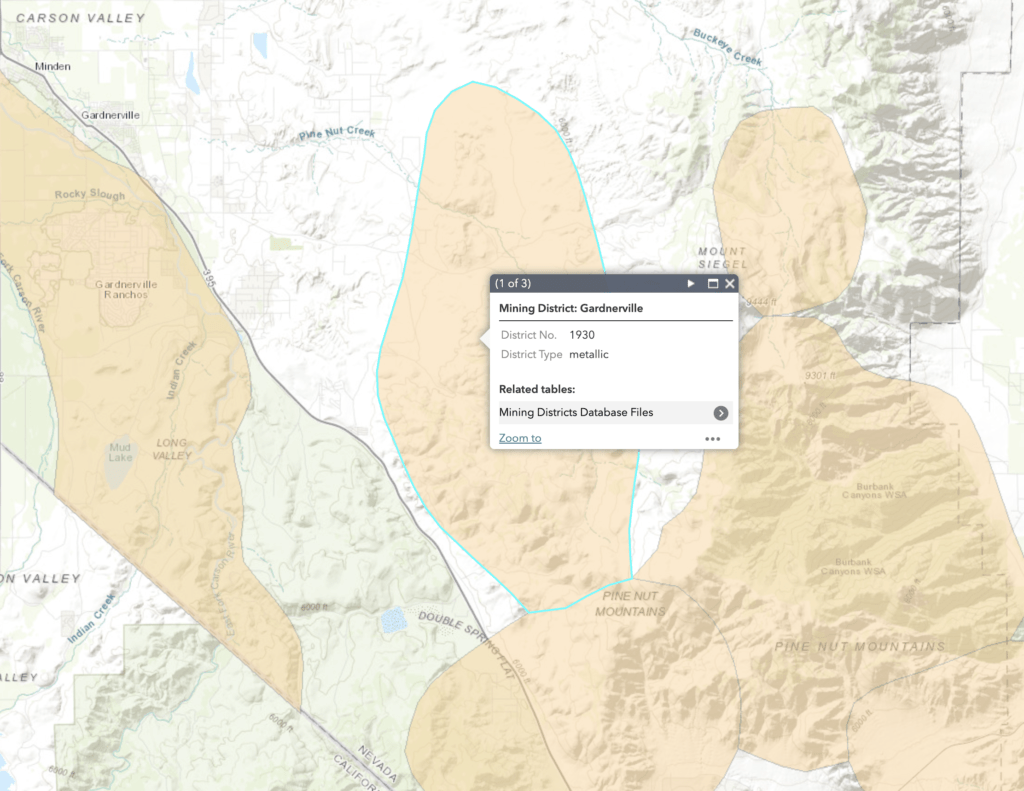
(Photo credit: UNR)
To process ore, Emigh purchased a 5-stamp mill at the Zim Mine. Two four-horse teams transported ore from his claim to the mill at Zim Mine. Unfortunately, the gold and silver were challenging to process, and funds soon ran low.
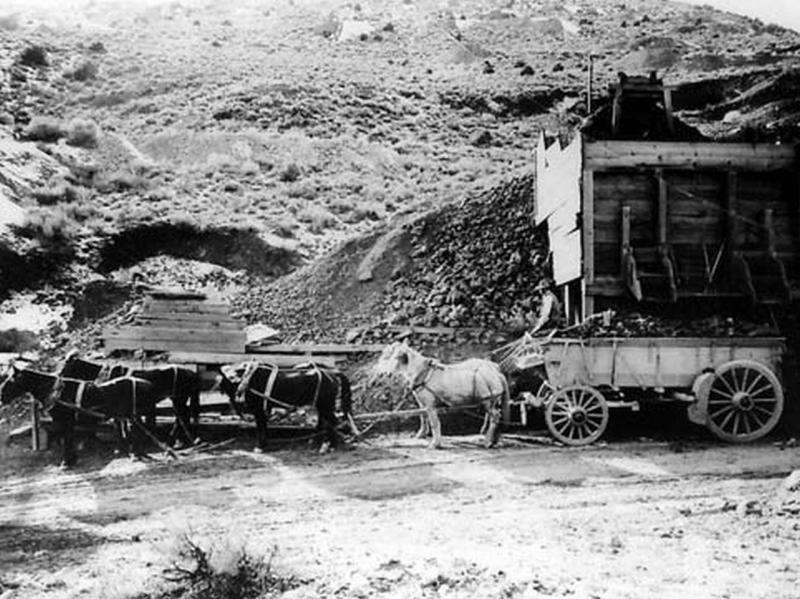
(Photo credit: WNHPC)
Development of the mine continued with eight to ten miners working the claim. Relocating the 5-stamp Zim mill to the mine site in 1907 improved efficiency.
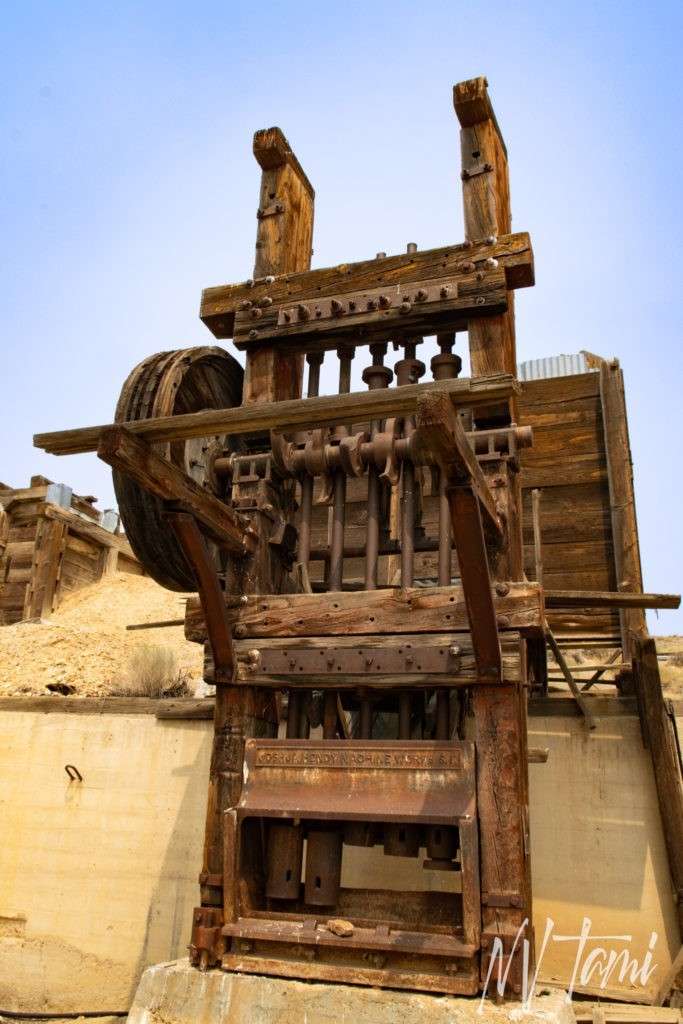
Emigh resigned from his position as a pastor to devote his full attention to raising funds for the mine. He utilized newspaper articles, ads, and meetings with investors.
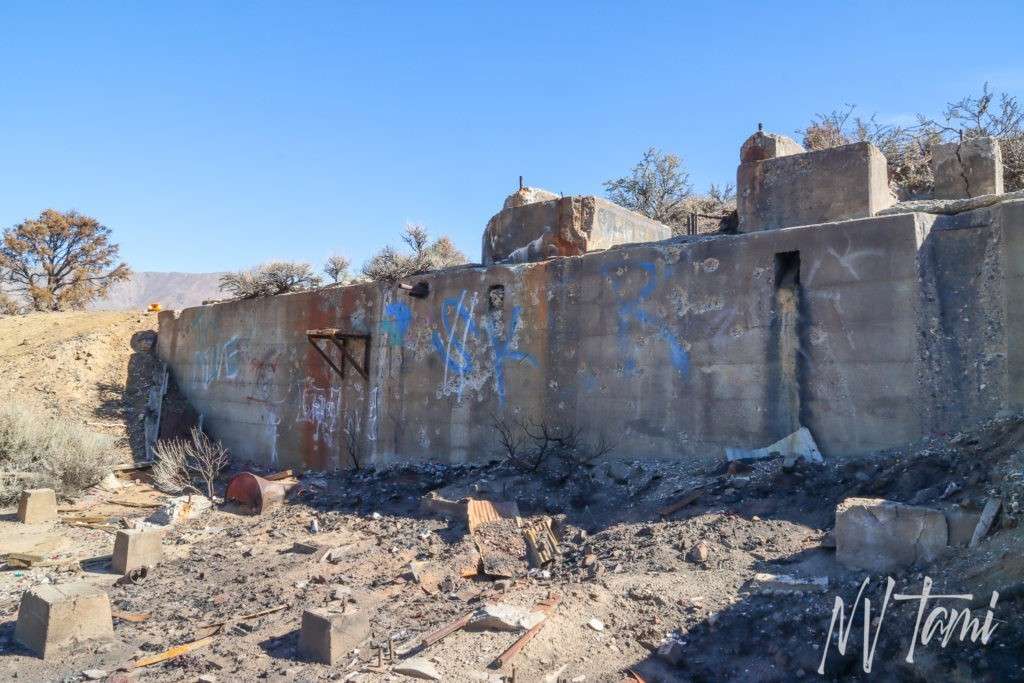
Development continued into 1908, with new veins opening. Capitalizing on the discovery, Emigh advertised in the paper and transported investors from Gardnerville, Carson City, and Genoa to the mine. The event was so popular he created three more days of tours. As a result, Pine Nut Mines Development and Power Company, commonly referred to as “Preacher’s Mine” was incorporated on May 1, with one million stocks selling for $1 each.

A five-acre mining camp developed at Preacher’s Mine, including boarding houses, barns and stables, hoist house, machine shop, and three outhouses. A domestic well serviced the residential structures, and the mill utilized water pumped from the mine. Power was planned to be brought eight miles from Gardnerville. Unfortunately, Preacher’s Mine was not as profitable as hoped, and miners accepted half of their salary in stocks.
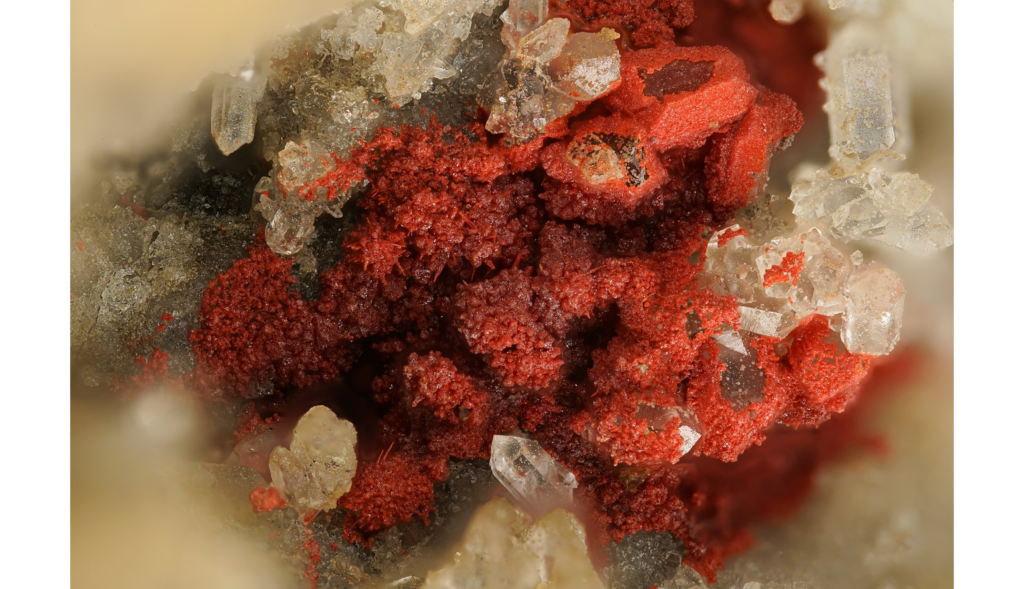
Nevada Cinnabar
(Photo credit: Mindat)
Assay at the University of Nevada showed high levels of cinnabar and recommended a cyanide processing plant. On July 1, 1909, the plant began reprocessing tailings, extracting gold and silver.
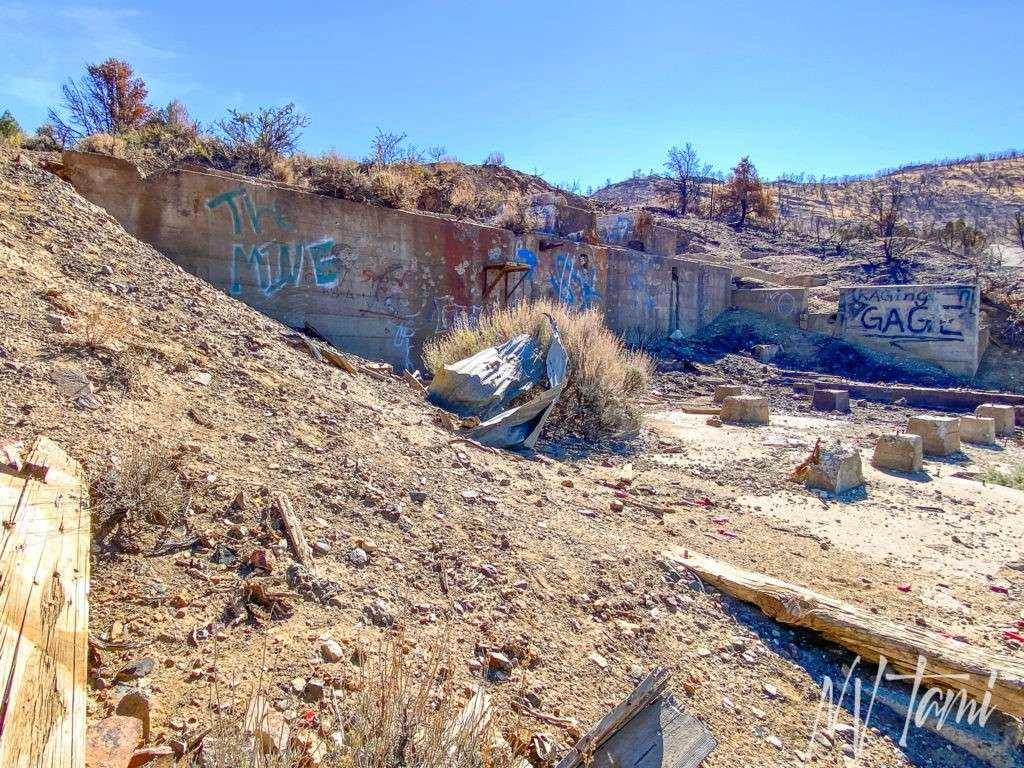
The mine showed promise but by multiple issues struck in 1911. Water flooded the shafts and pumps were used in an attempt to drain the mine. Emigh’s coat caught on a pump drive, breaking his leg below the knee. The final strike came when a contracting engineer sued the mine for back salary. Emigh closed the mine and returned to his previous position. He became known as the “Traveling Preacher,” holding services in Gardnerville, Mottsville, Genoa, and Markleeville.
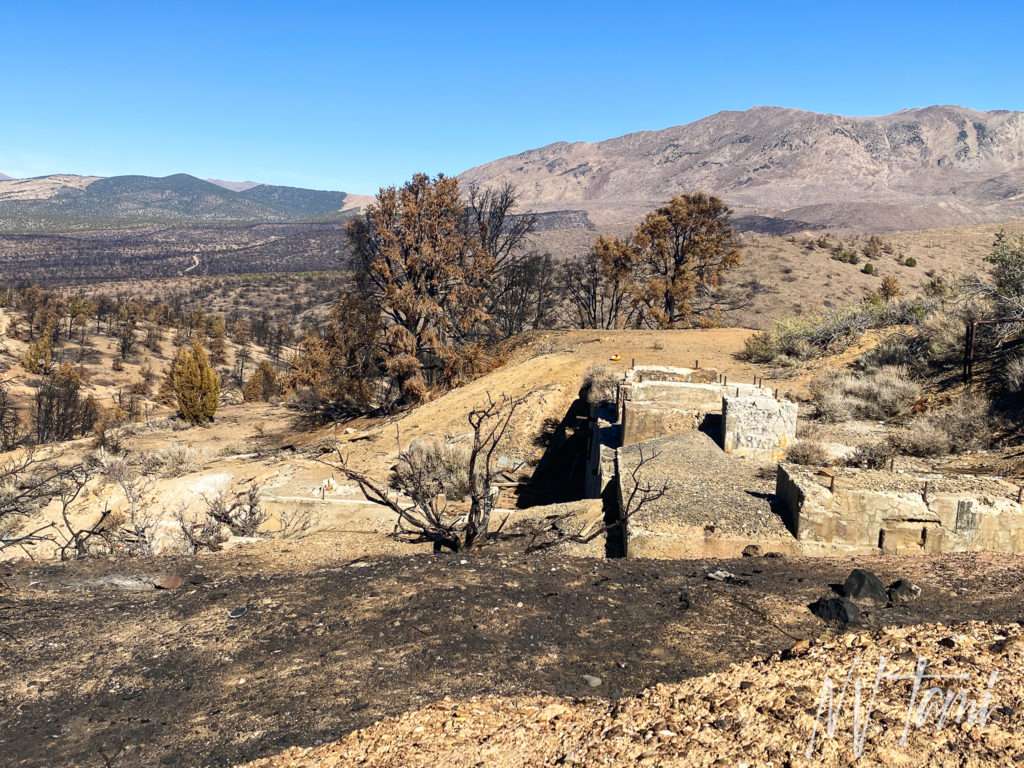
With debt paid off in 1918, Emigh hoped to reopen the mine but discovered vandals had stolen or destroyed the mining camp and mill. A leasing company took over the mine in 1925 but made little progress. Emigh made one final attempt to renew the mine in 1926. He reworked tailings and re-timbered the mine.
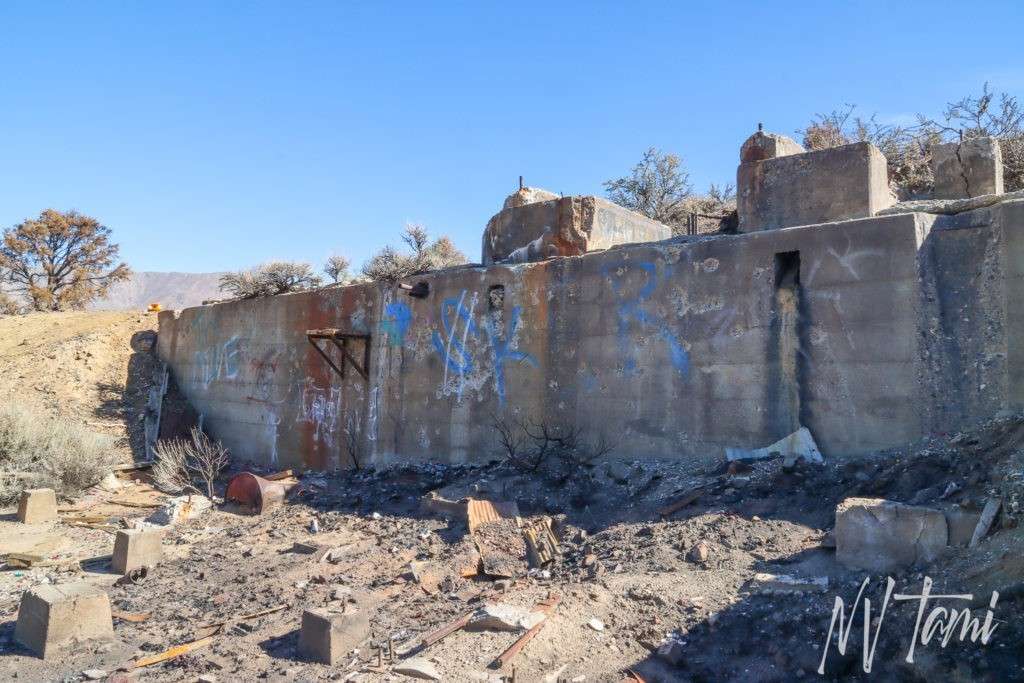
In twenty years of operation, Preacher’s Mine total production was several thousand dollars. Some have referred to the mine as a “colossal flop,” while others believe it was a Nevada investment scheme, where the commodity being mined was silver coin from investors’ pockets.
Still Life
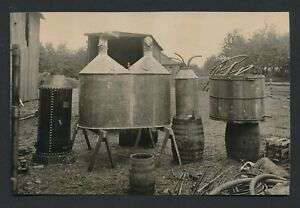
(Photo credit: eBay)
Druring Prohibition, Preacher’s Mine found a new lease on life. In 1921, “Babe” Cutler and Fred McGrath were arrested after they were found operating a still and having more than five gallons of corn whiskey in their possession. As Nevada law had no provisions making operating still illegal, it was “understood that the federal government, through the federal prohibitions officers, will push the charge against the defendants.” The Preacher’s Mine still was the first operation raided by Federal officers in Douglas County.
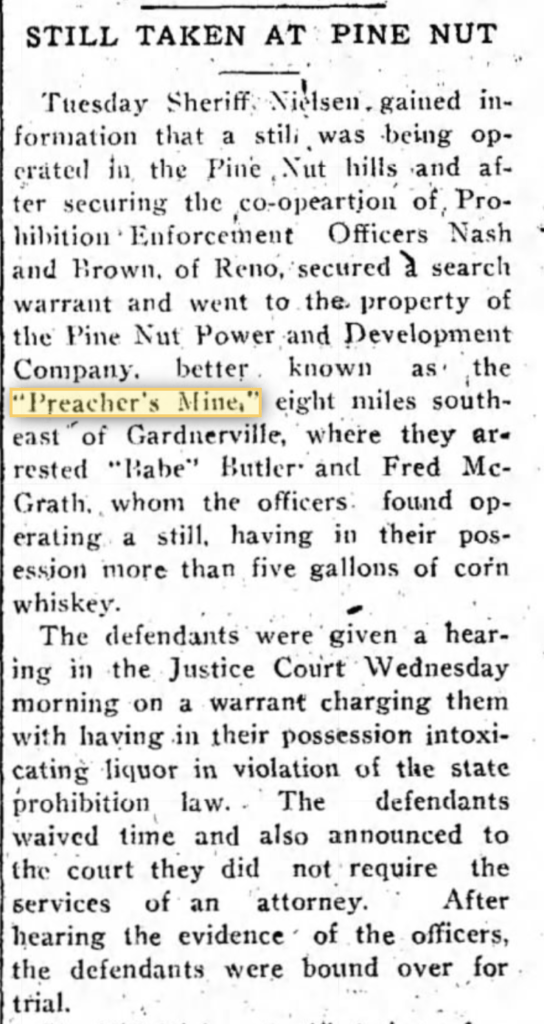
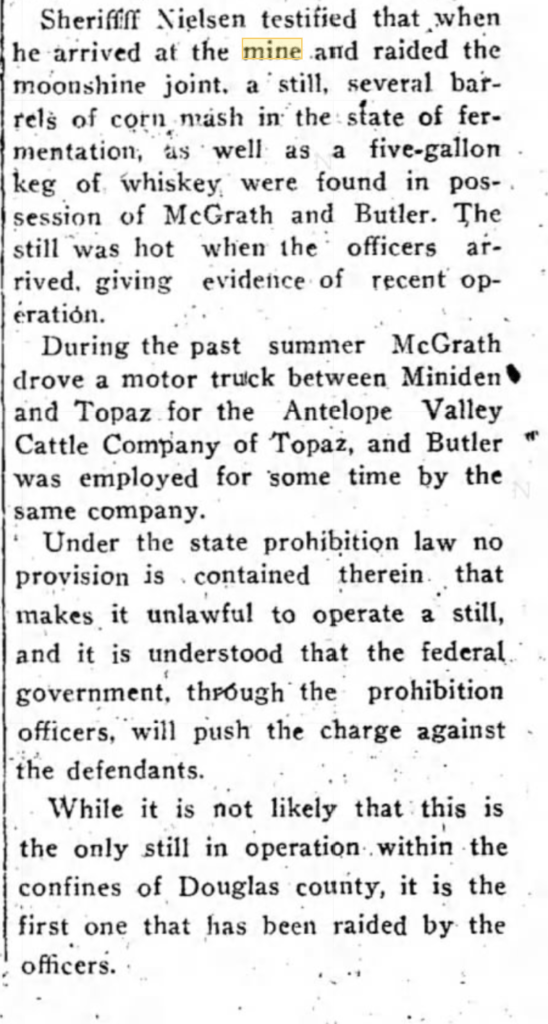
Ruins
Sadly, the remains of Preacher’s Mine that survived vandals did not survive the multiple fires that consumed the area. One fire named the Preacher Fire burned over 2000 acres in July 2017.
The concrete foundation of the mill is the most identifiable ruin. However, several concrete building foundations remain, including pipes, debris, and the mine.
Preacher’s Mill
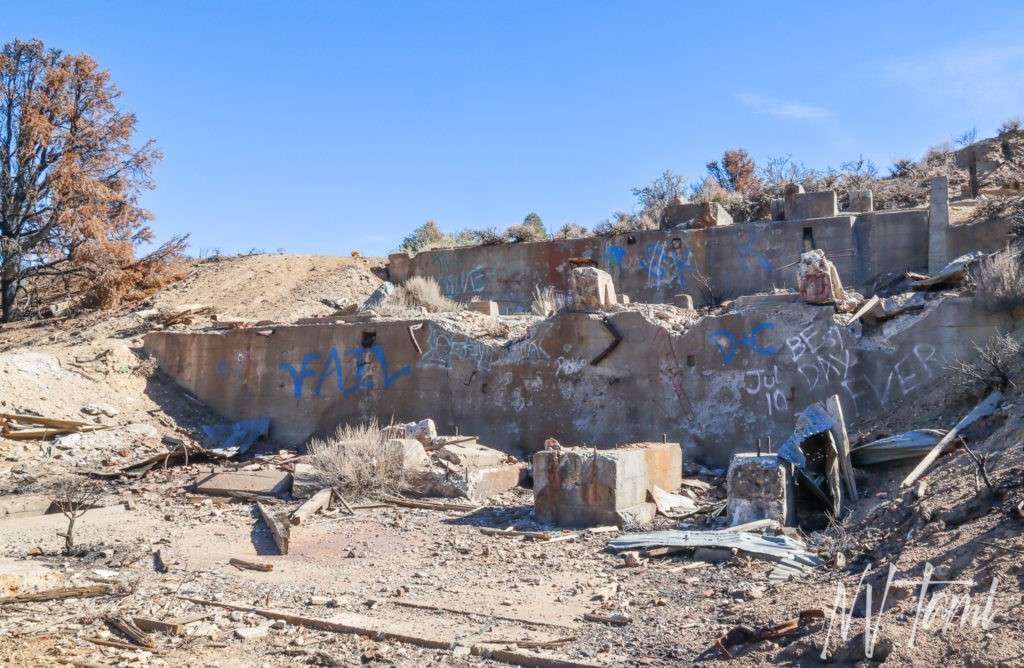
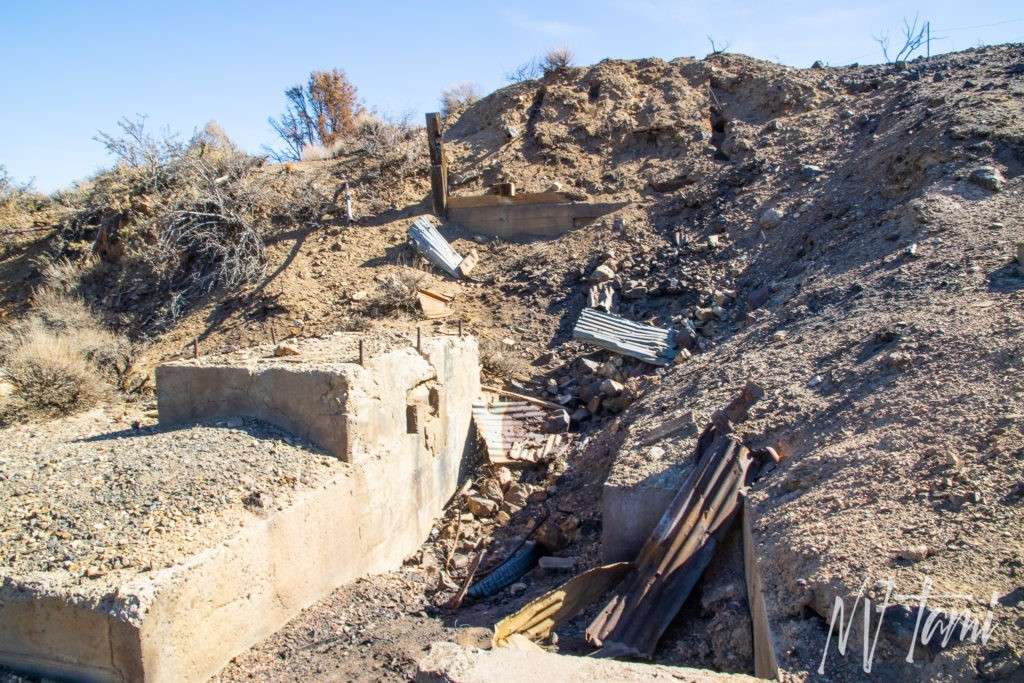
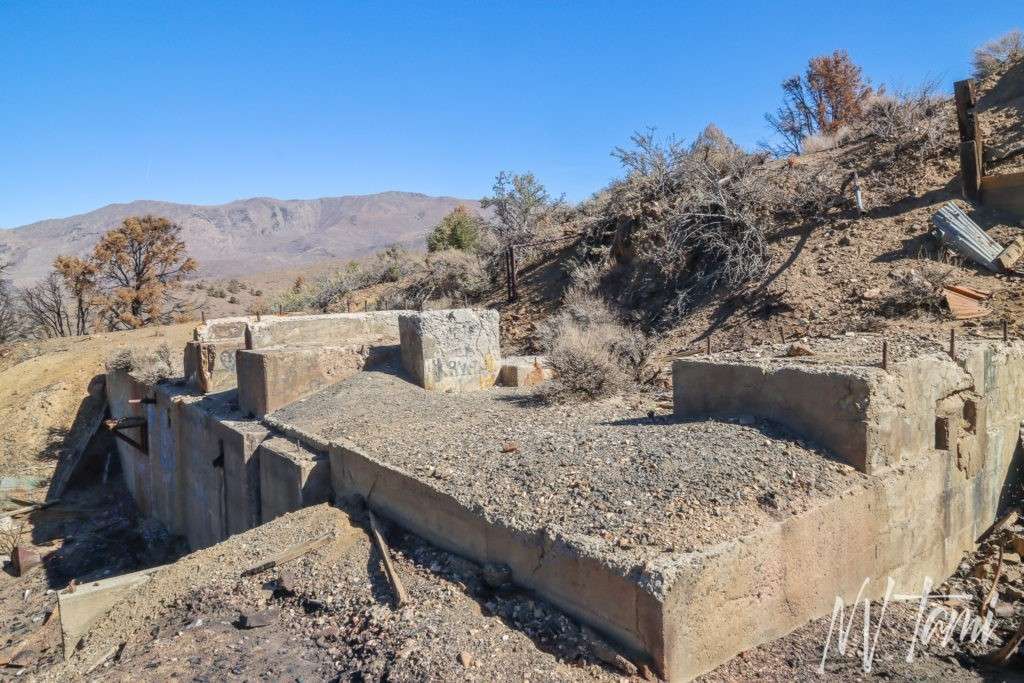
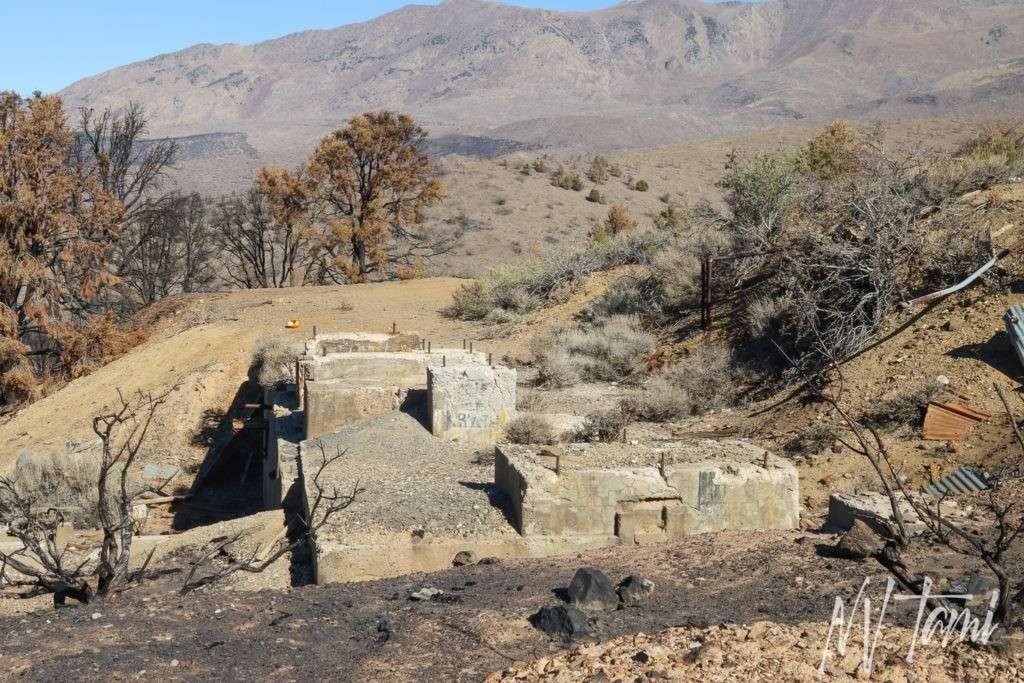
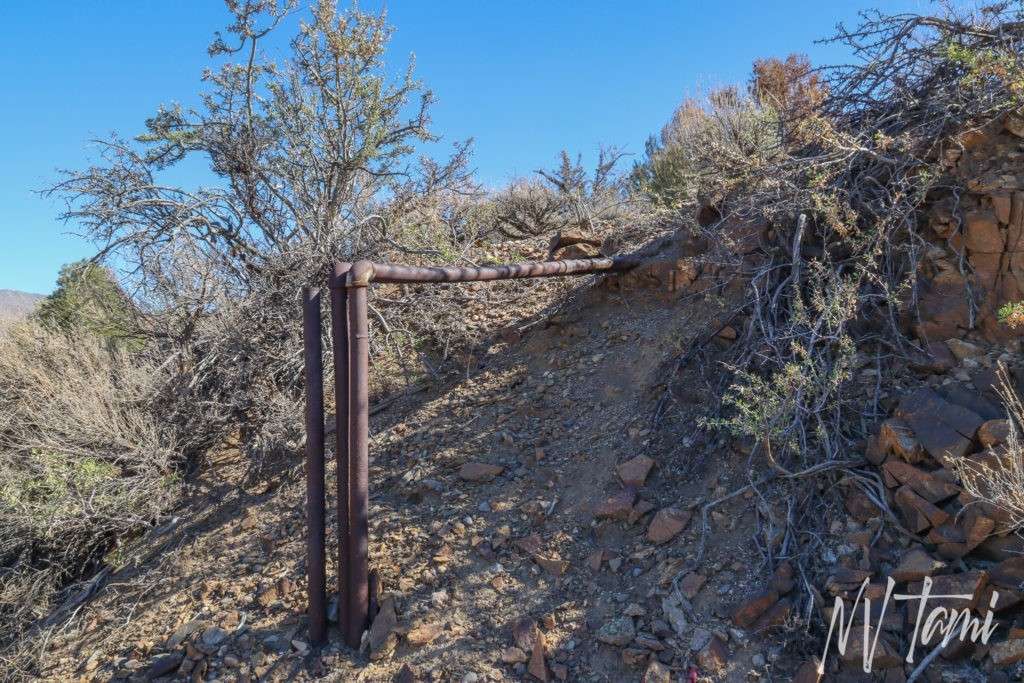
Building Foundations
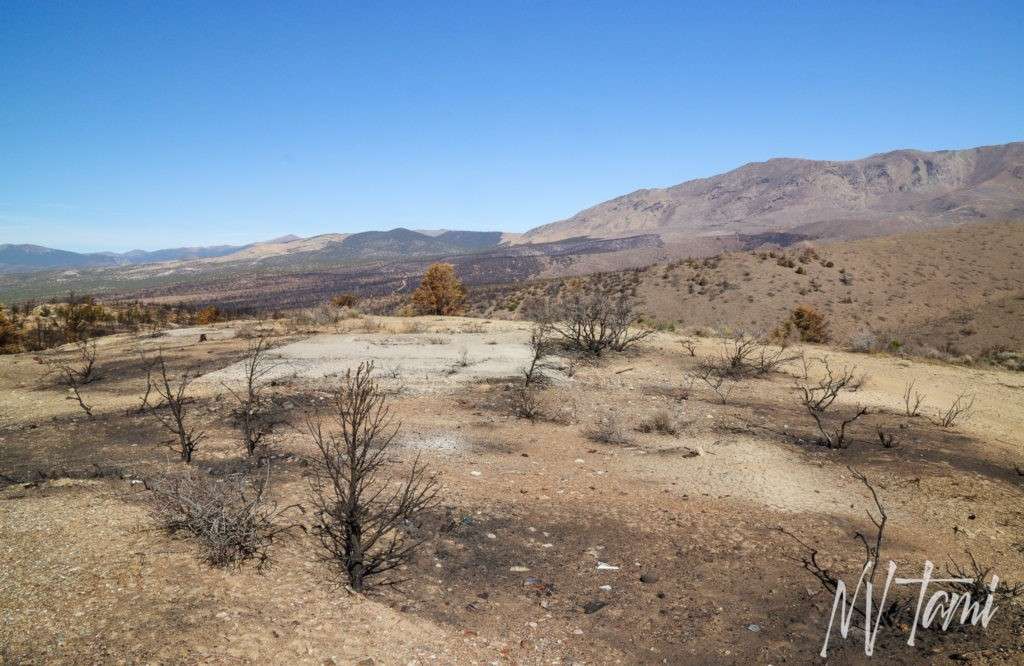
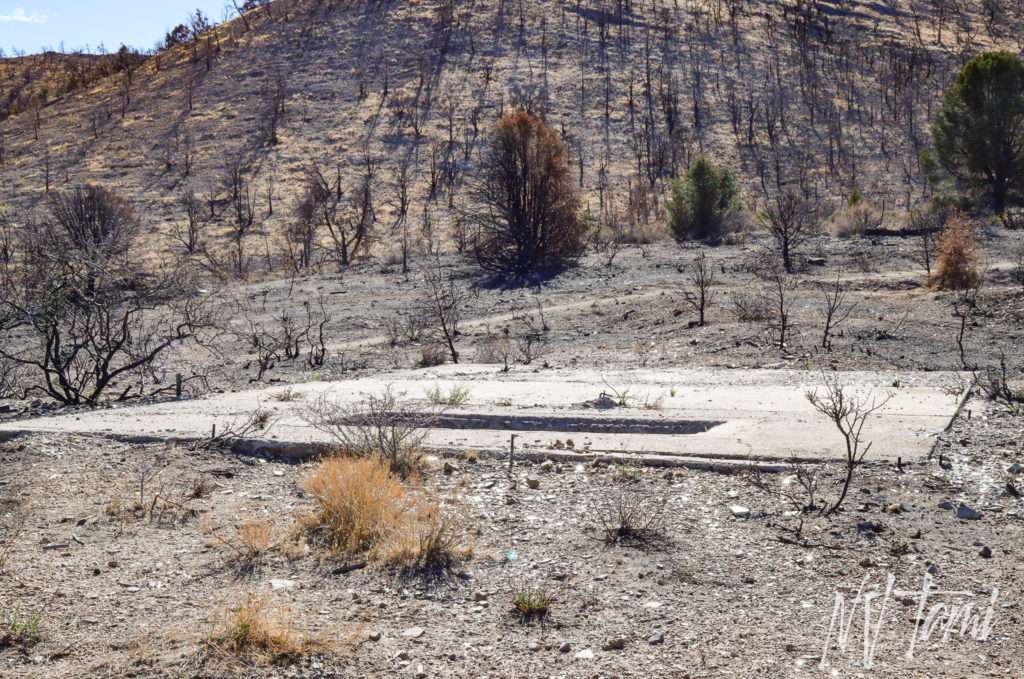
Preacher’s Mine
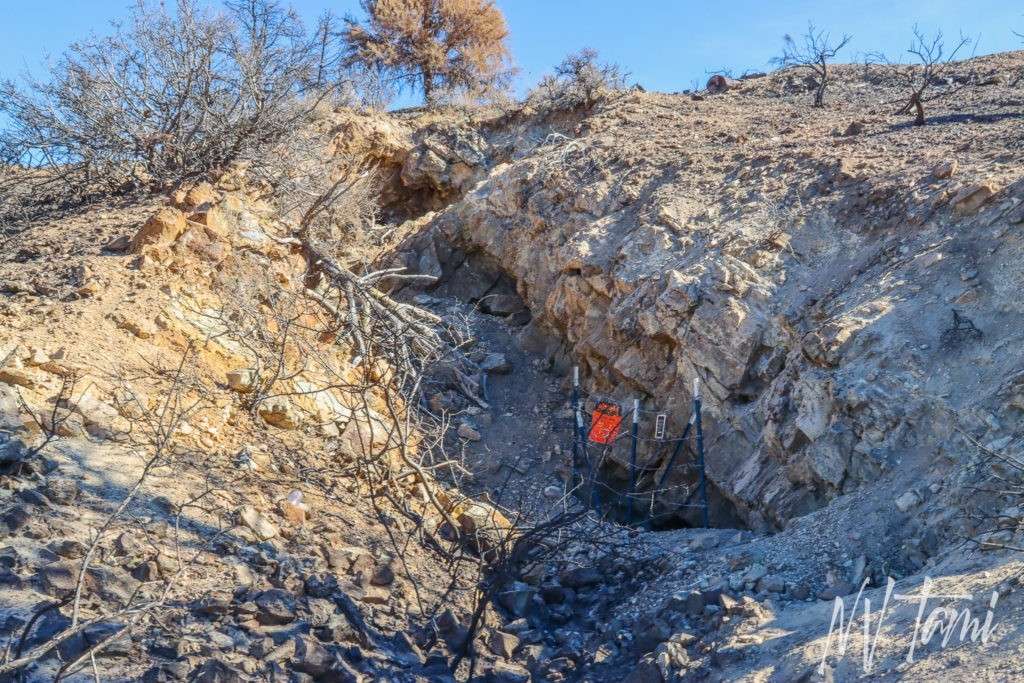
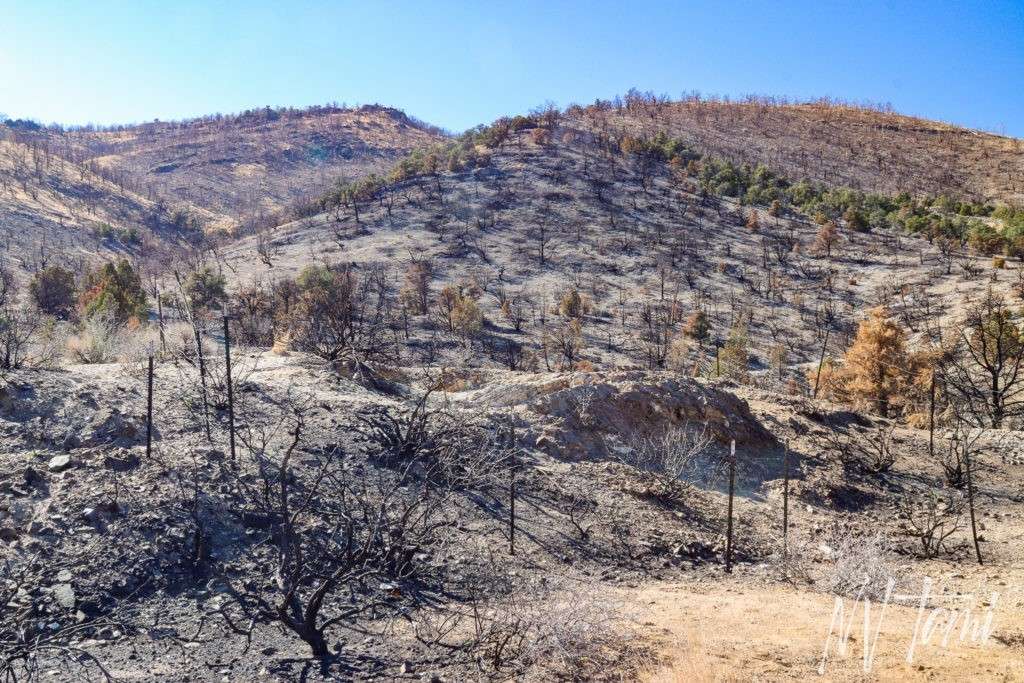
Holding Pond


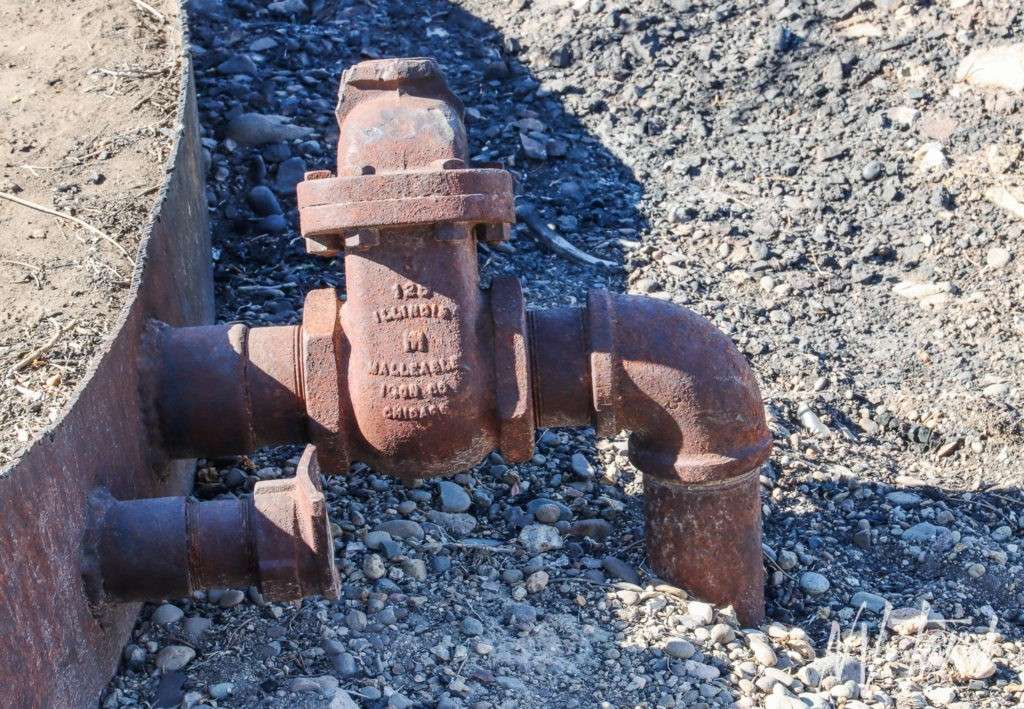
Weird things you find in the Nevada Desert
Not far from Preacher’s Mine, we came across this strange building in the middle of nowhere. It was concrete construction, but rebar ran in grids through all the windows. My first thought was it would be an excellent set-up for a serial killer. I asked my backroad groups, but no one was familiar with the structure’s purpose.
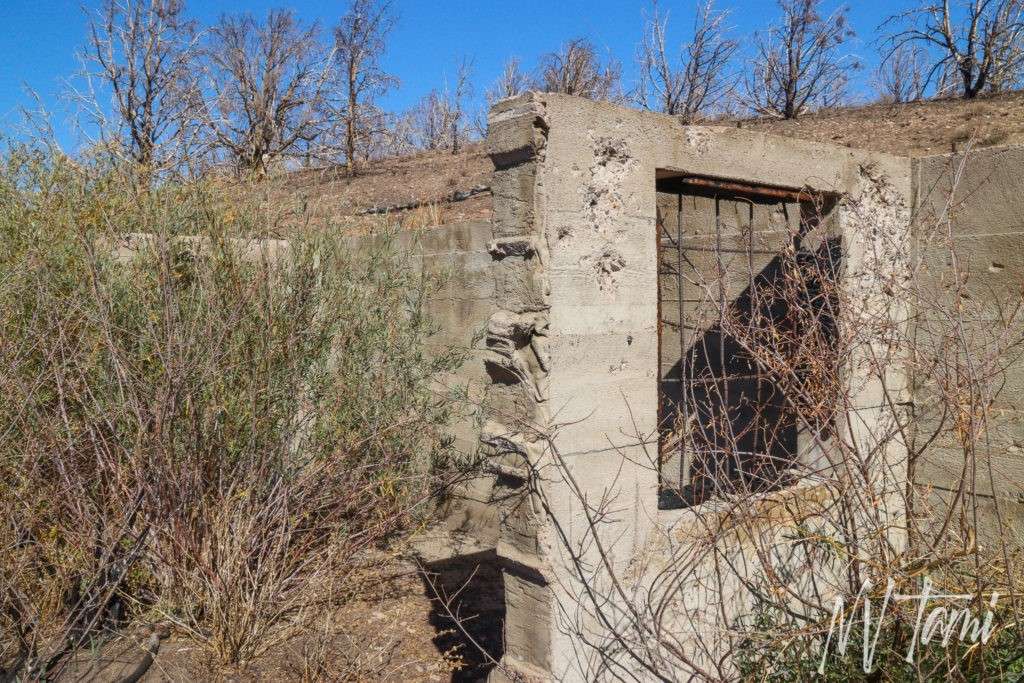
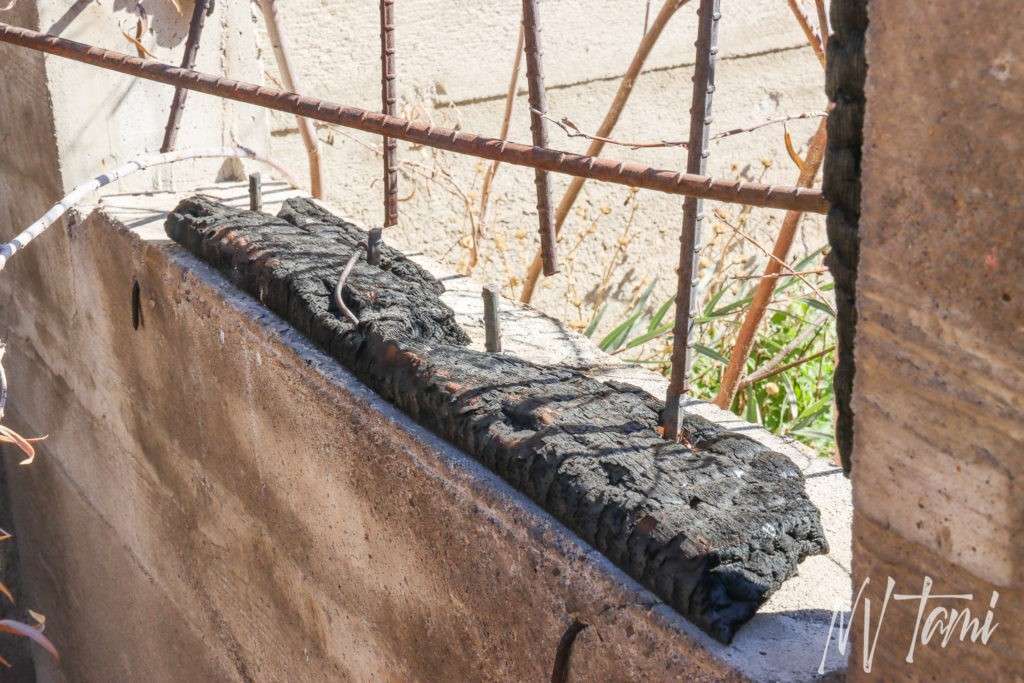
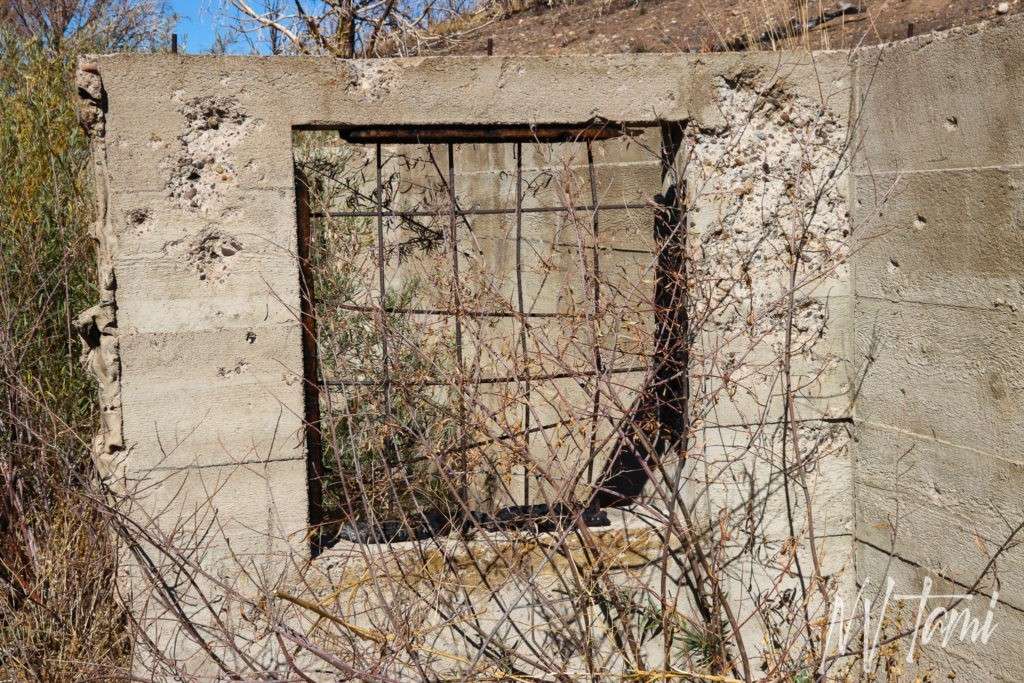
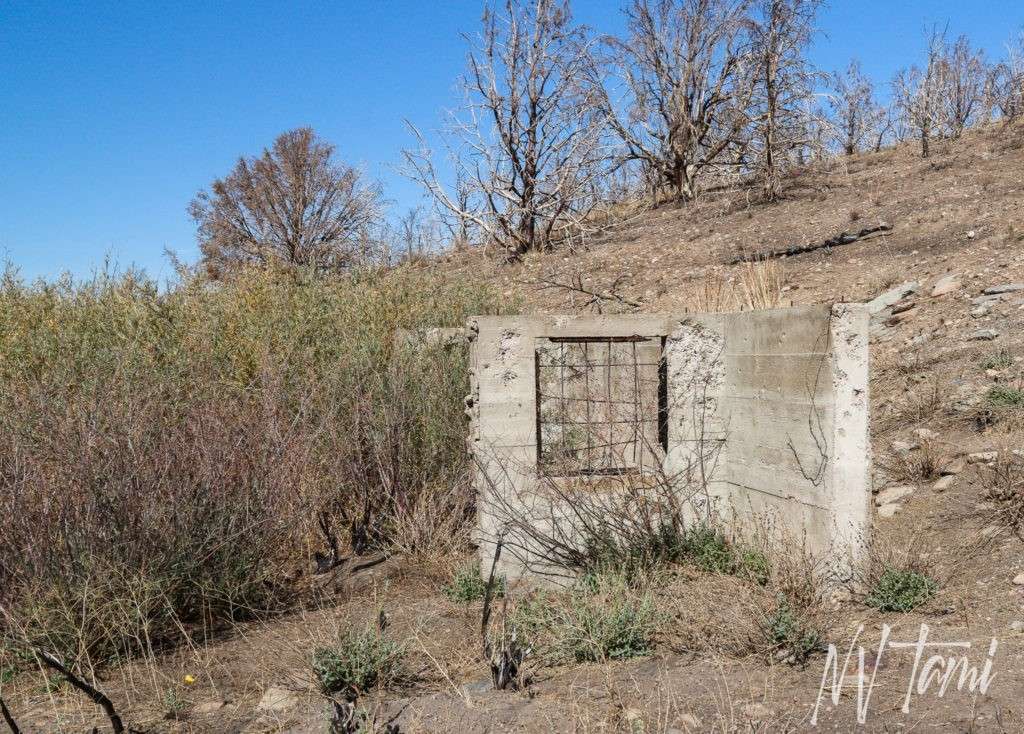
Want more ghost towns?
For information on more than three hundred ghost towns in Nevada, visit Nevada Ghost Towns Map or a list of Nevada ghost towns.

For information on more than 300 ghost towns in Nevada, visit Nevada Ghost Towns Map
References
- Lincoln, Francis Church. Mining Districts and Mineral Resources of Nevada. Stanley Paher, 1982. Pages 33-35.
- Minedat: Preacher’s Mine
- Nation, Nyle. The Pine Nut Chronicle: The History and Adventures of Mining in Douglas County, Nevada. Pine Nut Press, 2000. Pages 94-102.
- Reno Gazete-Journal: July 24, 2017. Preacher Fire burns 2000- acres near Gardnerville
- Reno Gazette Journal: Deember 30, 2017. Crews battle 100-acre wildfire
- USGS: Preachers Mine
- Western Mining History: Preachers Mine
- Yerington Times. November 23, 1921: Still Taken at Pine Nut
Steve says
That was a fun trip but our access was limited by some of the vehicles that should but only could be accessed by the vehicles that could. It was a valent effort by all and interesting. Especially “hubbys” drainage construction project. Let’s go agin this summer
Tami says
Let us plan a trip! I have another year as a Jeep driver so will be more confident.
Mike Clark says
The strange building with the rebar windows possibly was a blasting powder storage. The windows were designed to allow ventilation of the Nitro and provide a vent if a mishap occurred.
Tami says
Thank you! I asked several groups and my usual resources and no one had any idea. It wasn’t close to Preacher’s Mine, but not too far away. There were mines all over the Pine Nuts.
Catl says
It was actually a jail cell.at the fork of water at sheep’s camp
Tami says
Thanks for the information. It is amazing they have a jail cell all the way up there!
James Govan says
Interesting story but that is acutely the Alpine mine mill site . The Alpine Mine is in Hope Valley Ca. and operated in the 40’s & 50’s until the U.S. Government stopped supporting tungsten as a strategic metal. The mill was located on an area that held another tungsten deposit. The mill equipment was later moved to the Austin area and converted to recover silver. The Preacher Mine Is A few miles further down the road.
Tami says
My friend who grew up exploring the Pine Nuts told me it was Preachers Mine, and I didn’t check coordinates. I pulled coordinates for both mines this morning. You are correct, this is Alpine and Preachers is a few miles away. I’ll try and make a run back up there so I can update this article and one for Alpine. Thanks for the info.